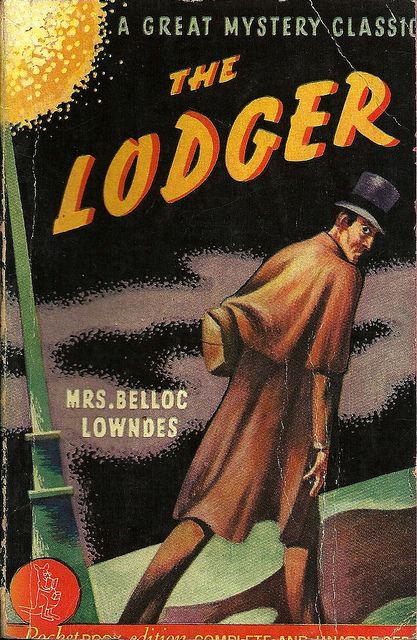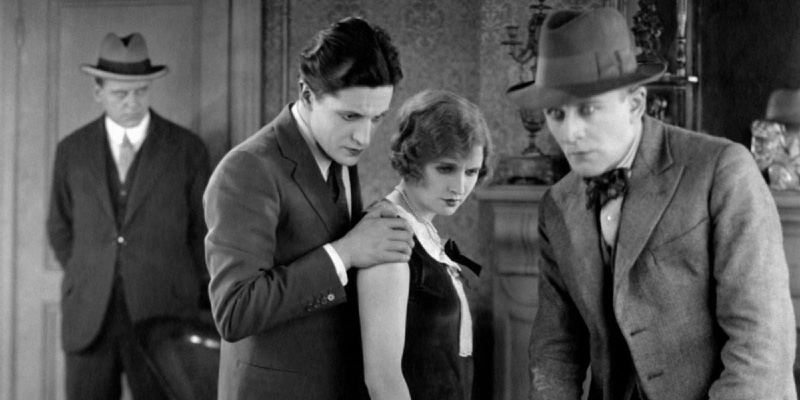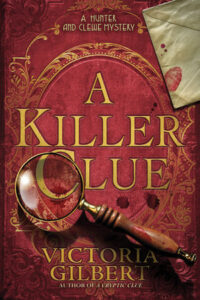Most avid mystery fans have heard of The Lodger. After all, it’s been used as the basis for at least five films, a stage play, numerous television episodes, several radio plays, and even an opera. The first known work to fictionalize the tale of Jack the Ripper, it was originally a short story published in McClure’s Magazine in 1911, only twenty-three years after the serial killer terrorized London. In 1913 the short story was lengthened and serialized in the Daily Telegraph, then published as a novel by Methuen Publishing.
But fewer people probably know much about the author of this seminal work in the mystery genre. I certainly didn’t, until after researching information for A Cryptic Clue, the first book in my Hunter and Clewe mystery series. Since my librarian protagonist, Jane Hunter, is cataloging books from the mystery-based collection of her wealthy boss, Cameron Clewe, I included mentions of Golden Age and earlier mystery authors. In the process, I learned more about the original creator of The Lodger, author Marie Belloc Lowndes.

Born in London in 1868, Belloc Lowndes was the older sister of fellow author Hilaire Belloc. Raised primarily in France, Marie married journalist Frederick Lowndes in 1896. From 1898 to 1946 (the year before she died) she wrote sixty-four works, including novels, short stories, biographies, and plays, but her main output—over forty novels—was in the mystery genre. Her French detective, Hercules Popeau, who appeared in some of her novels from the 1920s on, is believed to have had an influence on Agatha Christie’s creation of the Belgian detective, Hercule Poirot.
Maire Belloc Lowndes’ most influential work, The Lodger, was based on tales of Jack the Ripper, a mystery still fascinating people today. In a memoir, Belloc Lowndes credits a conversation with a dinner companion, who related the story of two former servants who’d opened a lodging house. The couple believed the killer known as Jack the Ripper had spent a night in their lodgings before committing one of his horrible crimes. Belloc Lowndes seized upon this idea as the genesis for a short story, which resulted in her 1911 work. She then expanded the story into the 1913 novel.
The Lodger is considered a prime example of how to write psychological suspense. The story is told from the point-of-view of Ellen Bunting who, along with her husband, runs a lodging-house in London. They endure difficulties, but are saved from bankruptcy by the arrival of a strange man seeking a room. This man, calling himself Mr. Sleuth, pays rent in advance and only asks to be left alone. At first, this seems like a perfect arrangement, but Ellen slowly grows suspicious. Mr. Sleuth arrived on the same day a gruesome murder, only leaves the house after dark, and often burns things in his room, things Ellen soon realizes are his own clothes. Also, other murders of women occur in the area while Mr. Sleuth is in residence. Ellen begins to worry her lodger is the killer Scotland Yard and others are seeking, but is reluctant to turn him in, fearing she is mistaken. She’s also worried that, if Mr. Sleuth is the murderer, she and her husband will get in trouble for sheltering him. After more disturbing incidents, the Buntings realize they’ve left Mr. Bunting’s adult daughter, Daisy, alone with their lodger and rush home in fear. But Mr. Sleuth simply asks Daisy, along with Ellen, to accompany him to Madame Tussauds’ museum. While there, they see the Head Commissioner of Police and other officers. Fearing he’s been betrayed by Ellen, Mr. Sleuth flees, only to be discovered, drowned in a river, five days later.
Numerous adaptions of The Lodger have altered this story dramatically, although strangely the ending—where the Ripper character either drowns or disappears via a river—is usually retained. Alfred Hitchcock’s 1927 silent version, The Lodger: A Story of the London Fog, changed Daisy to a fashion model who lives with her parents, the Buntings. Daisy’s boyfriend, Joe, is a police officer assigned to hunt down the killer they call “The Avenger.” In this version, while the Buntings still suspect their lodger, it turns out he’s innocent and was hunting the killer who’d murdered his sister. This ending was requested by the film studio because they didn’t want their famous star, Ivor Novello, to play a murderer. However, it is worth noting that a play version, titled Who is He? which was co-written by Belloc Lowndes, and which Hitchcock saw on the stage in 1915, had a similar happy ending.
Other film versions include a 1932 “talkie” remake of Hitchcock’s film, a 1944 American film leaning more into horror, and a 1953 adaption that employs a Freudian-style motive for the killer. In 2009 David Ondaatje’s version of The Lodger transports the action to contemporary Hollywood and features a killer who’s a copy-cat of the original Ripper.
It’s clear that most book and media adaptions of the Ripper story owe a debt to the original achievements of Marie Belloc Lowndes, a female mystery author far ahead of her time. She deserves to be recognized, not just for The Lodger, but also for her other mystery novels, many written before the heyday of the Golden Age of Mystery. She’s definitely one of the pioneering female authors in the genre.
***
Victoria Gilbert’s novel, A Killer Clue, was released by Crooked Lane Books on September 24, 2024.


















